
Page 2 - Railroad news in &
towards Jewell, Iowa
The Toledo & North Western
Railroad and the Chicago Northwestern Railways

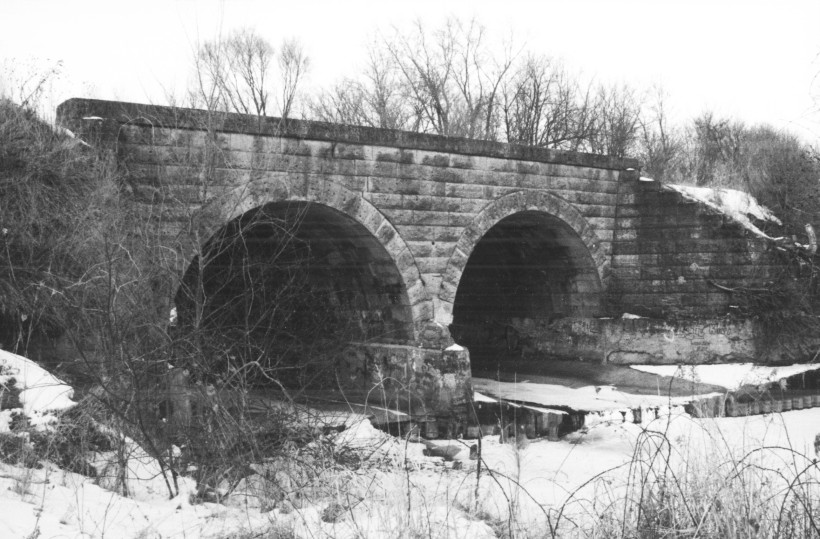
Here is another image of the 1902 twin stone arch bridge.
It allowed the trains to cross the Lake Cairo
(sometimes called Mud Lake) Dredge Ditch.
The next image (a scan of a postcard) shows a passenger
train crossing the Stone Arch heading west towards Ellsworth.
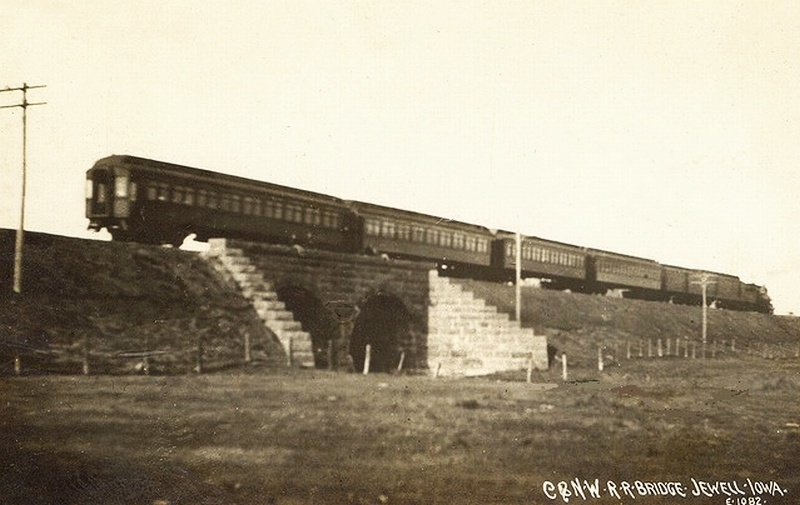
1932 Aerial Photo of the northern (railroad) portion
of Jewell

(You may click to view a larger version of this 1932 photo.)
This photo is from a postcard
picture taken from a plane. The two-story building just above
the city water tower is part of the Dutton Hotel. Seen
above the hotel is the depot south of the string of rail cars just to the
right of the state highway main street. On the right dark edge
of the photo is the second railroad water tower. Follow the
string of rail cars at the northwest angled rail line past the coaling
tower (built in 1929), to see towards the top left corner, the house and
farm buildings of town founder David Jewell. Just to the left of
the home is seen a short train waiting for it's turn to enter the depot
area. The Jewell family home later served as the Club House
of the
Jewell Golf and Country Club until the new facility was built.
Between the northbound Chicago & Northwestern tracks and the
westbound set of tracks sits the two-stall engine house and the railroad
owned stockyards and various elevators on the west leg of the wye.
1934 Map of Chicago & North-Western Railroad Company
railways
(You may click to view a larger version of this 1934 Map, and the Iowa
portion is seen below the enlargement of the map title.)


An enlargement of the Iowa portion of the above map
is seen next:

(You may click to view a larger version. While showing the railroad
lines, these maps do not show the midwest or the state of Iowa to an exact
scale. )

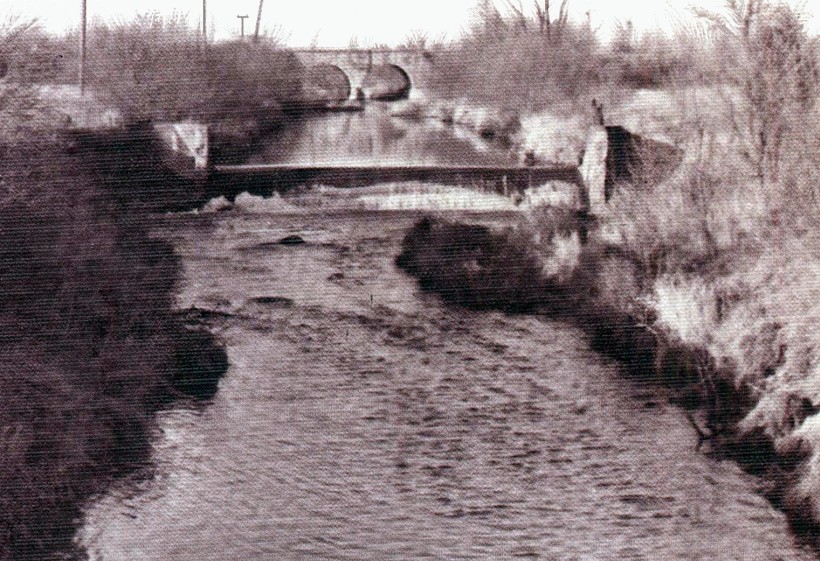
Steam locomotives
burn coal, wood or oil to heat water and turn it into steam, so to operate
steam locomotives it is vital to have a ready supply of water.
The steam is then used to move pistons connected to huge rods that turn
the locomotive's wheels. This reservoir dam (now removed) on
the drainage ditch for Mud Lake (Lake Cairo) allowed the water to
build up and fill the reservoir located just northeast of the stone double
arch through a tile connecting the ditch to the railroad reservoir.
Water then could be pumped to the water tower near the Main Street/Wilson
Highway depot. That enabled the steam engine locomotives
to load the water they needed to operate from the standpipes.
(See the four images below.)



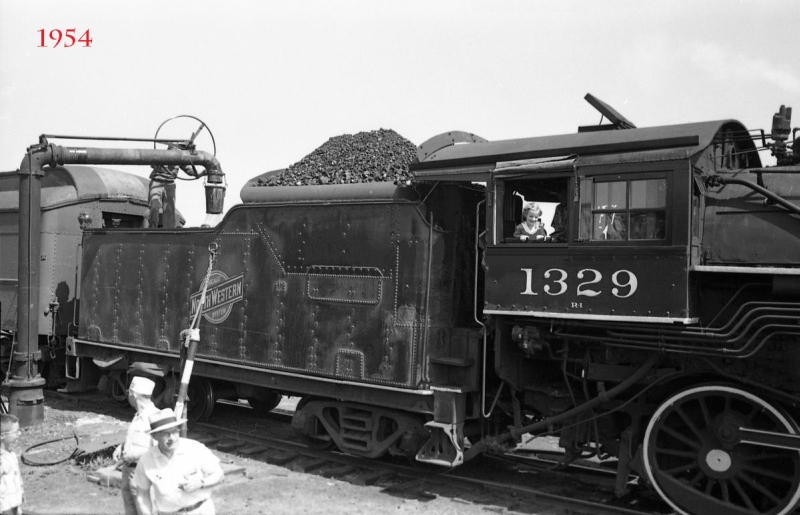
The
Chicago
and North Western was the first railroad to operate a railway post
office; the first to run sleeping cars west of Chicago; the first to carry
dining cars between Chicago and San Francisco; and the first to use a telegraph
for its operation. In 1900, the Chicago & Northwestern
was one of the first railroads to establish a pension plan for its employees.
The 1929 depression resulted in a 75% decline in passengers, manufactured
goods decreased 64% and iron ore fell by 95%. Farm products
only failed by 26%. A petition for bankruptcy was filed on
June 27, 1936 but was held up in court until 1943 when the company's traffic
levels were breaking all records due to World War II.

Despite
the bankruptcy, the C&NW entered the streamline era in order
to compete with the other railroads providing streamline service between
Chicago and the West Coast. In Iowa, the C&NW instroduced
streamline service in conjunction with the Union Pacific to provide
service between Chicago and the West Coast. The City of
Portland made its inaugural run on June 6, 1935, In May and June,
1936, the City of Los Angeles, City of San Francisco, and
City
of Denver began operations. Initially, the trains operated
one or two days per week and in 1947 were upgraded to daily service.
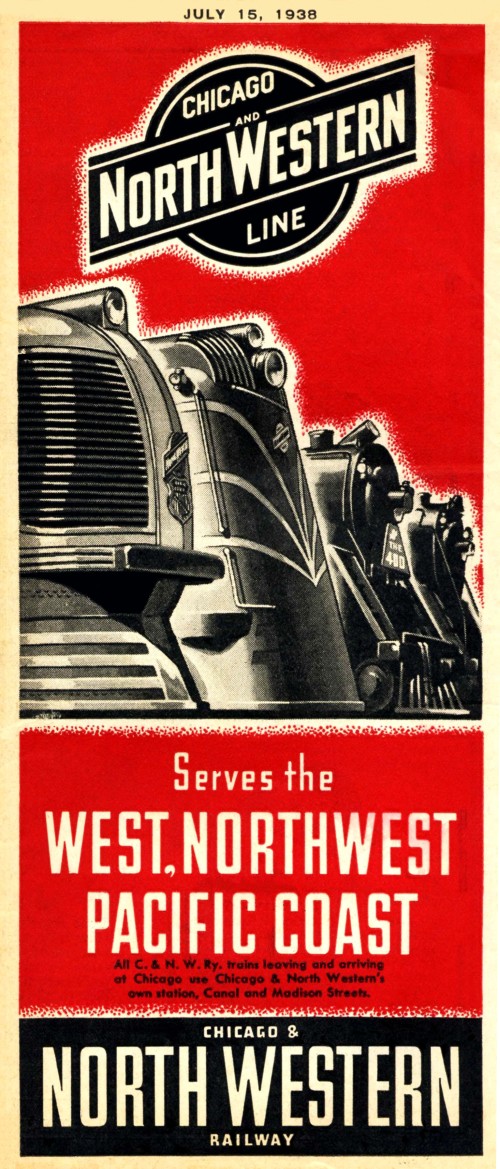
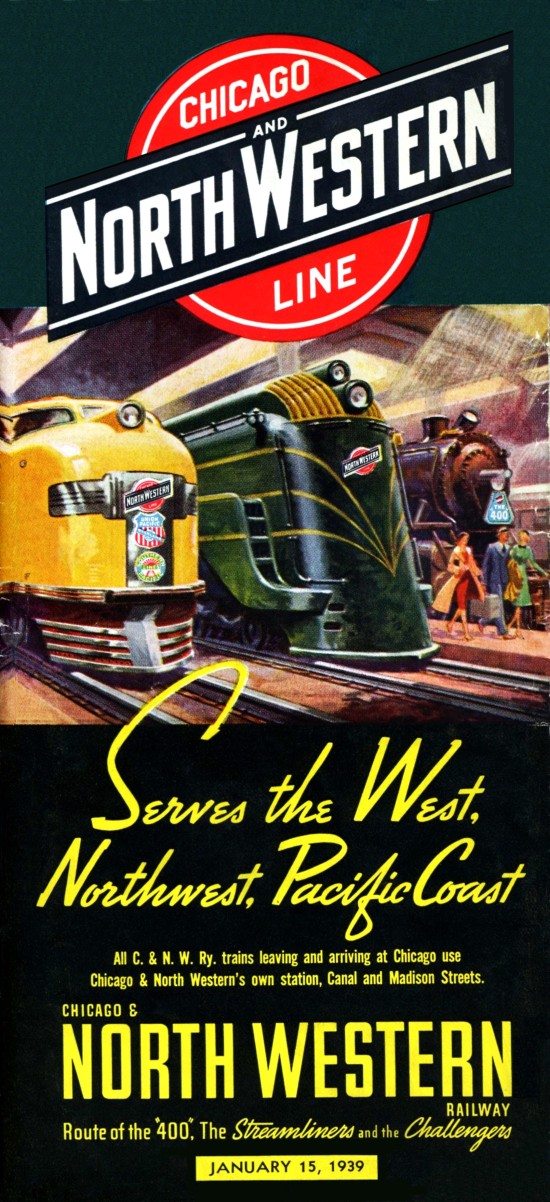
(You may click to enlarge.)
Beginning
as the Galena & Chicago Union out of Chicago in 1848, under
the guidance of William Butler Ogden, the railroad pushed out into the
forests of Wisconsin and Minnesota to the farming country of Iowa and the
plains of Nebraska and the Dakotas. It was the first railroad
to be completed to Omaha in January, 1867 to connect to Union Pacific
and
make transcontinental rail transportation possible.
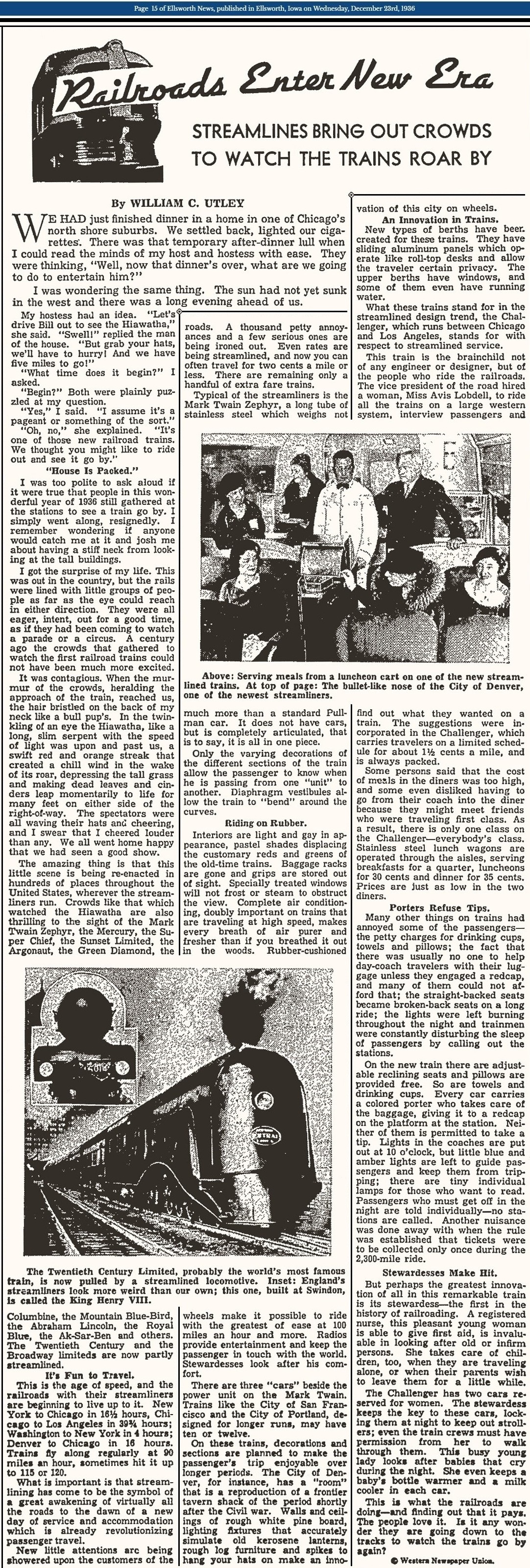
Across
the Chicago & Northwestern system, the company purchased nine
streamline steam locomotives in spring of 1938 to power the Union Pacific/Chicago
& NorthWestern streamliners through Iowa. They were
"Super Power" locomotives and were the last steam locomotives purchased
by the
C&NW. They operated only for a few years
powering streamline trains and were downgraded to other freight and passenger
assignments when new diesels were purchased.

The Chicago & North-Western Class E-4 was a class of
nine streamlined 4-6-4 "Hudson" steam locomotives built by the American
Locomotive Company.
The story of the Chicago and
NorthWestern Railway (C&NW) is one of the most dramatic in American
railroad history. It is a story of innovation, service, and perseverance.
From its first little wood-burning locomotive, the Pioneer, to the
streamlined diesel powered trains of the 1940s, the history of the C&NW
reflected the spirit of American pioneering. It became one of the
most powerful influence in the development of the America's midwest from
Chicago to the Black Hills, Lake Superior and accross Iowa.
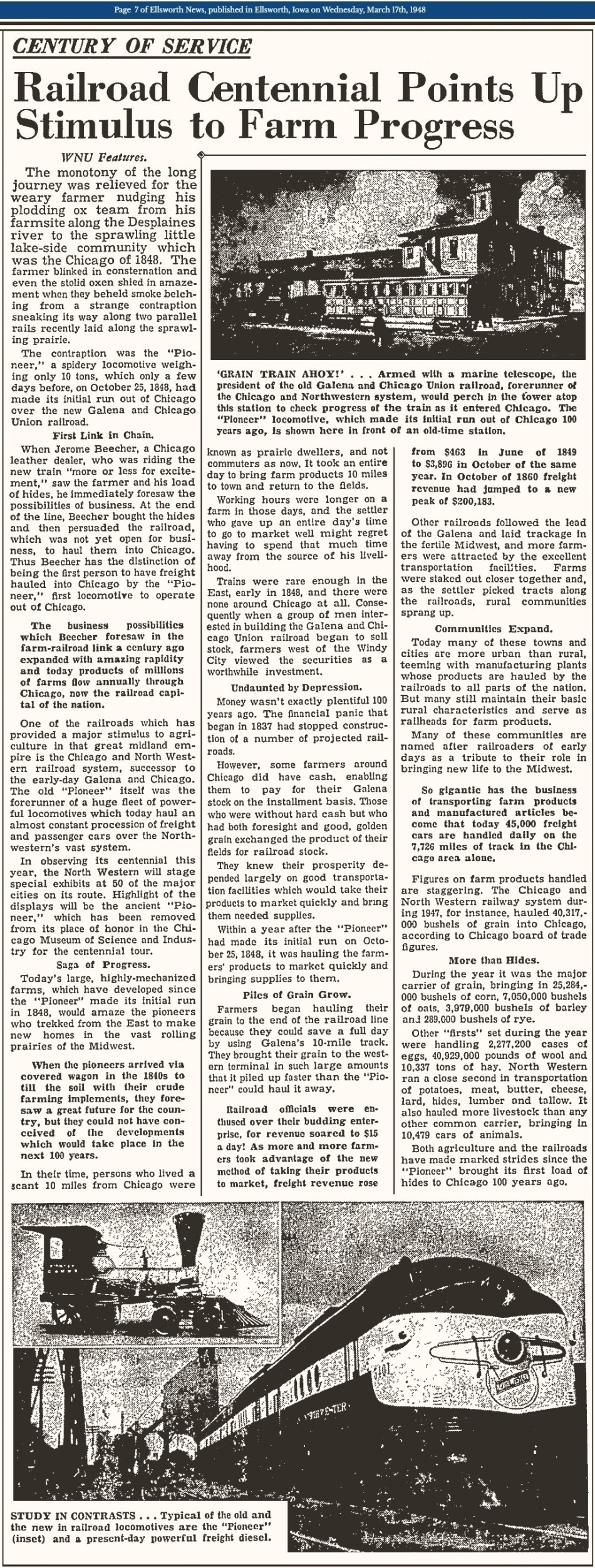
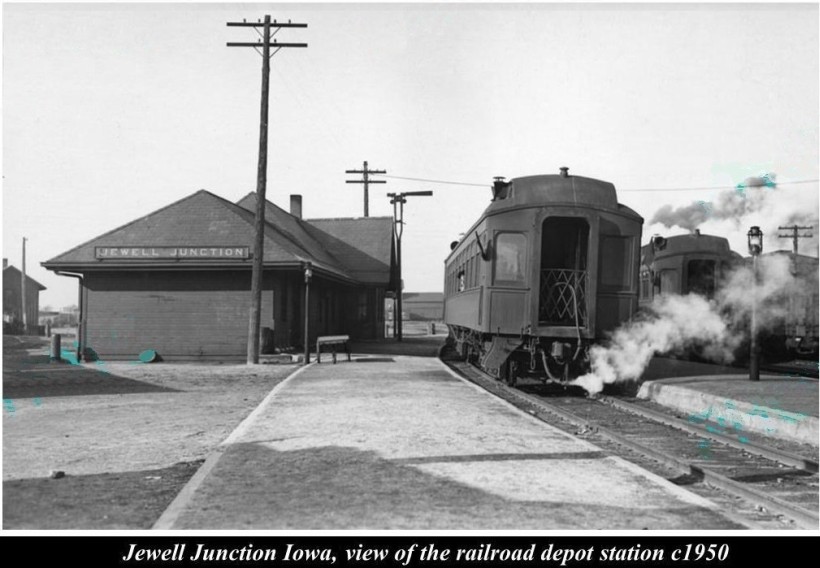
The above image of the Jewell
Depot looks west towards the Highway 69 Main Street.
1951
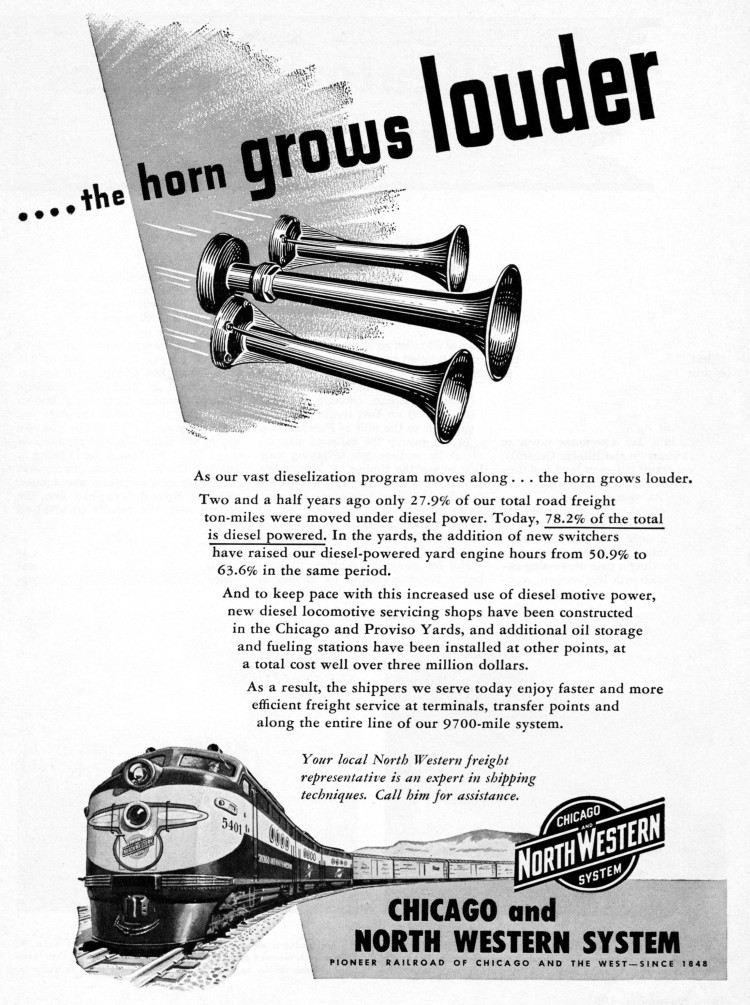
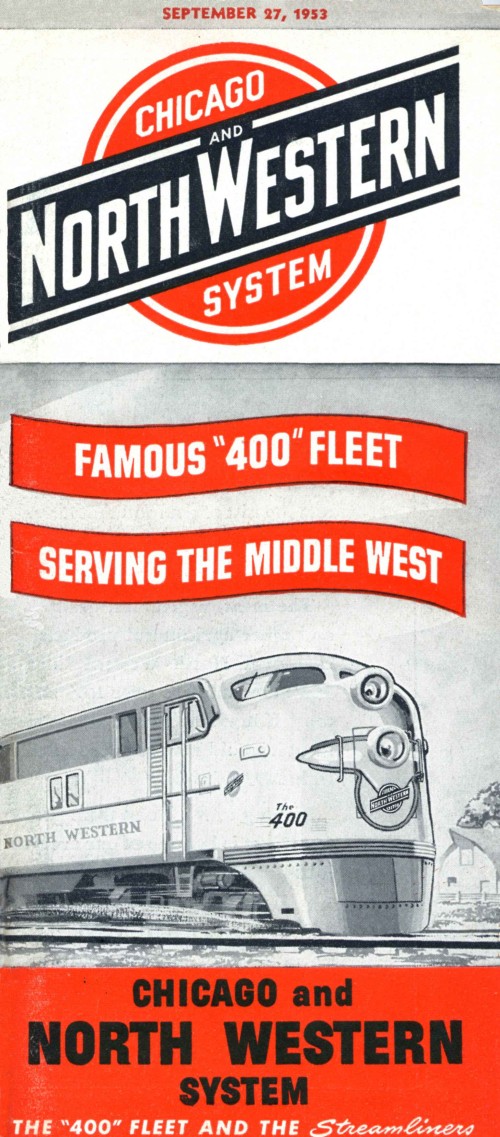
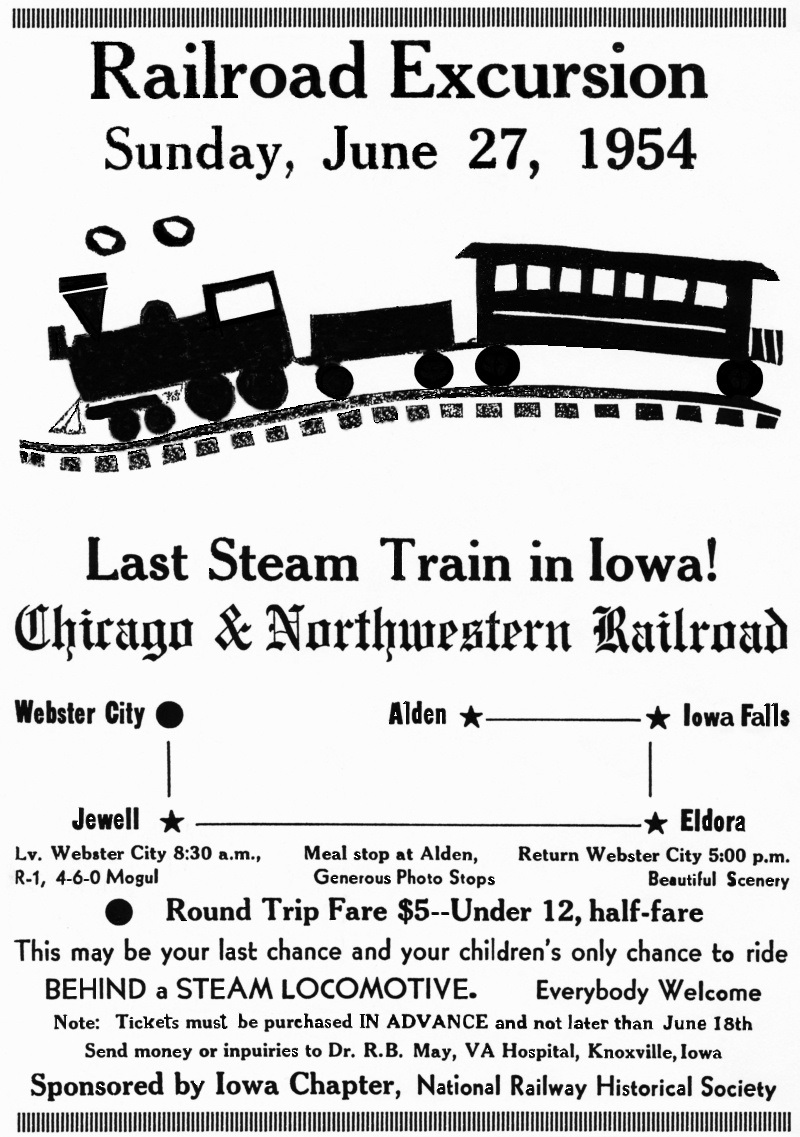
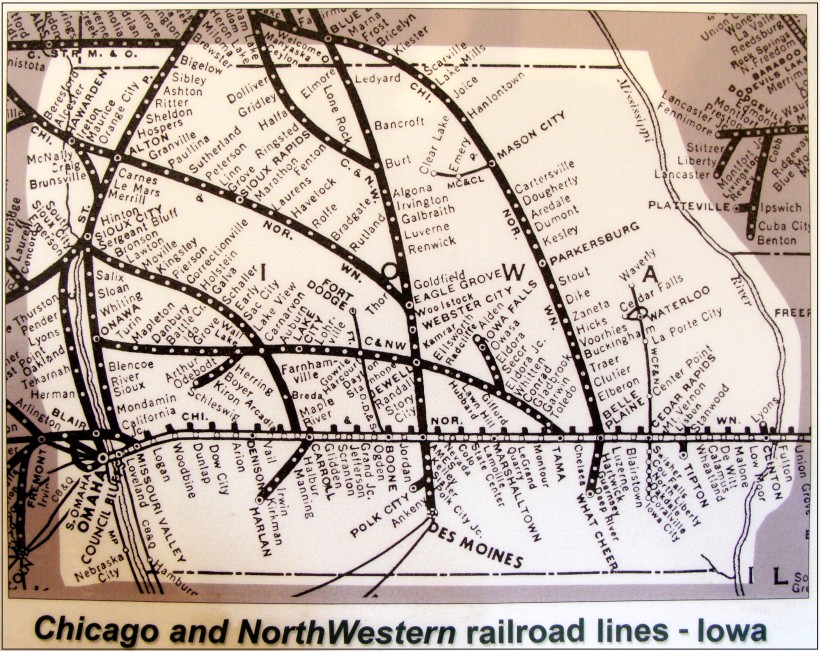
This map may be clicked to enlarge.
|
1985
|
The loss of the Jewell Depot was published in
the
January 3, 1985 edition of the South Hamilton Record
News:

Jewell loses landmark as depot
is torched
Photo and text by Jeff Heeren
Jewell lost a landmark last week when the Jewell Depot was burned down
by the local fire department.
The depot was built in 1880 to serve the Toledo and Northwestern Railroad
Company which had tracks built from the south and east, and also to the
north to Webster City. David Jewell and the railroad reached
agreement to build the depot roundhouse and stockyard on Jewell's property,
and that the complex would be known as Jewell Junction.
In the early years, the depot was used primarily for passenger cars, where
people could purchase tickets. But it was also used for sending
mail, sending telegrams at any time of day or night, and just as a place
to meet with friends.
After the last passenger train ran in 1956, an agent was placed there to
control switches, arranging trains and other railroad jobs.
The depot was used until about three years ago when the agent was removed
by the railroad.
The
Jewell Junction Depot was the first building and first sign of life for
what has become the city of Jewell. While the structure exists
no longer, memories of the once-stately building will be remembered, and
its history will likely be passed on from generation to generation. |
|
Those who are interested in railroads should visit
The
Boone & Scenic Valley Railroad facility in Boone.
Inside the adjacent James H. Andrew Railroad Museum
and History Center there is much information.
This following image shows one of the fine display
panels (text can be read below).
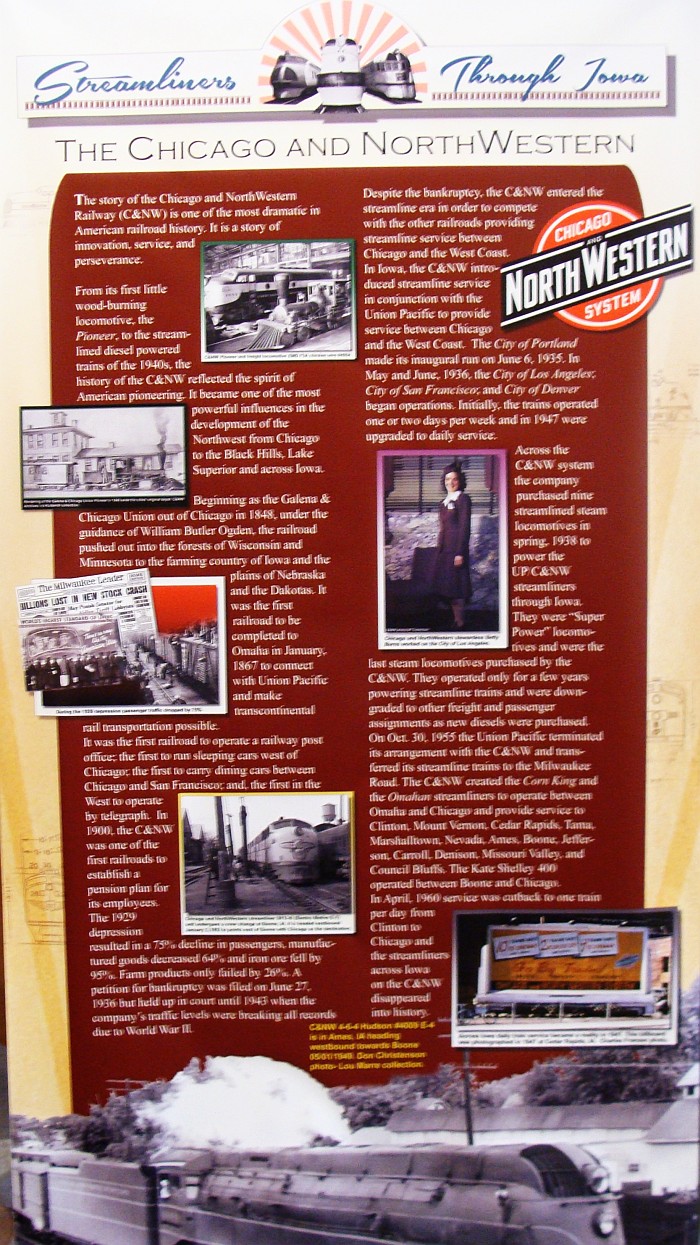

|
Music and Postage Stamps
<
- - - - - - - - - - - >
These tell a story and
reflect
Railroad life in Jewell and
America.
Click to learn more.
|
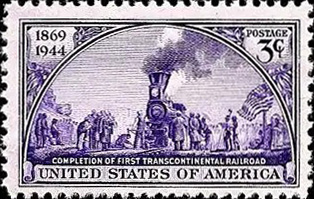
|
On October
30, 1955 the Union Pacific terminated its arrangement with the Chicago
& North-Western and transferred its streamline trains to the Milwaukee
Road. The Chicago & North-Western created the
Corn
King and the Omahan streamliners to operated between Omaha and
Chicago and provide service to Clinton, Mount Vernon, Cedar Rapids, Tama,
Marshalltown, Nevada, Ames, Boone, Jefferson, Carroll, Denison, Missouri
Valley, and Council Bluffs. The
Kate Shelley 400 operated
between Boone and Chicago. In April, 1960 service was cut back to
one train per day from Clinton to Chicago and the streamliners across Iowa
on the Chicago & North-Western disappeared into history.
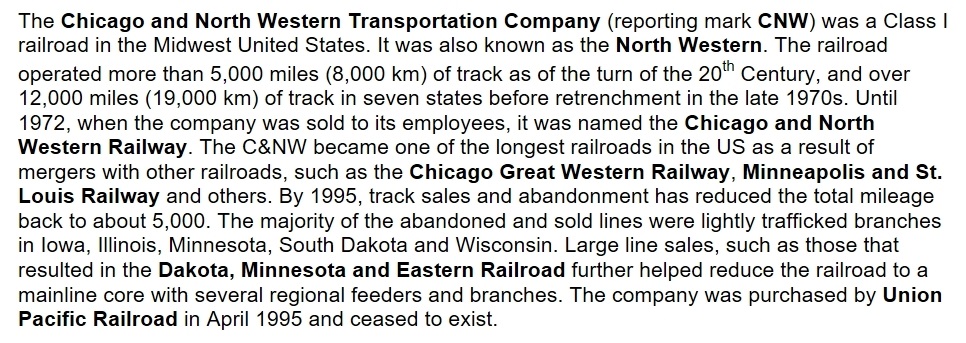

The Chicago & North-Western
and
other major companies converted to diesels and ceased using steam for most
uses in 1956. Steam locomotives are no longer used for
primary freight and passenger transport due to the development of more
efficient and reliable technologies, such as diesel and electric locomotives,
which are faster, require less maintenance, and are more fuel-efficient.


Page 3 - Renewal of the Jewell
subdivision in 2022
-
-

































